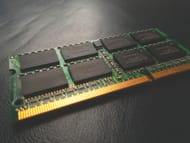RAM, or Random Access Memory, is a volatile memory form that temporarily stores data the smartphone processor needs to access quickly. Memory is an important smartphone component as it allows the phone to run smoothly and handle multiple tasks simultaneously. When you open an app, it is loaded into RAM, and when you close it, it is removed from it.
Smartphones have become an essential part of our lives, as we use them daily for entertainment, gaming, and productivity. As phones become more powerful, the amount of memory required also increases. But how much RAM do you really need in a smartphone?
In this article, we will explore the different memory options available in smartphones and help you understand what you should look for when purchasing a new phone.
Is 12GB RAM too much?
Let's discuss in detail what the gigabyte number in your smartphone's memory signifies and how much you actually need.
Trends in the market

These days, smartphones come with various memory options, ranging from 4GB to 16GB or 32GB, especially with gaming phones by ASUS. The amount of memory hardware needed in a smartphone depends on your usage and the type of apps you use. If your smartphone is utilized only for basic tasks like calling, messaging, and browsing the web, 4GB should suffice. However, if you use it for gaming, video editing, or running multiple apps simultaneously, you will require more memory space.
For average user
For most users, 6GB or 8GB of memory space should be sufficient. These phones can handle most apps and games without any lag. However, if you use heavy apps, you may want to consider a phone with 12GB or 16GB or RAM. Such phones are designed for heavy multitasking and can handle even the most demanding games and apps. Some devices also come with cooling systems.
It is worth noting that memory is not the only factor that determines the performance of a smartphone. Other factors like the processor, storage, and software optimization also play a significant role.
A phone with a powerful processor and optimized software can perform better with less memory hardware than a phone with a weaker processor and poorly optimized software. A perfect example is the iPhones from Apple.
Their software and hardware are well-optimized and everything is in sync even with 4GB or 6GB of memory.
Effect of memory on price and life of smartphone

The amount of Random Access Memory affects the price of a smartphone. Phones with more RAM are generally more expensive. If you are on a budget, a phone with 4GB or 6GB should be enough. However, if you can afford it, settle for a device with at least 8GB or more RAM for better performance and multitasking capabilities.
Another factor to consider when purchasing a phone is if it is future-proof. As apps and games become more demanding, the amount of memory required to run them also increases. When playing simple arcade games, lower memory is fine, but for games like Honkai Star Rail or PUBG Mobile, you will need to consider phones that can offer better overall performance.
If you plan to use your phone for a few years, it is a good idea to get one with more RAM than you currently need. This will ensure your phone can handle future updates and new apps without slowing down. Another factor is the type of memory hardware installed. The most powerful type currently is LPDDR5X, which can be quite expensive.
For daily usage, it is recommended to check that the device has at least an LPDDR4 version of RAM as they are faster than those from previous generations.
If you are a power user or plan to keep your smartphone for a few years, you may want to consider one with 12GB or higher LPDDR4 memory. For more such informative content, follow Sportskeeda/Gamingtech.
